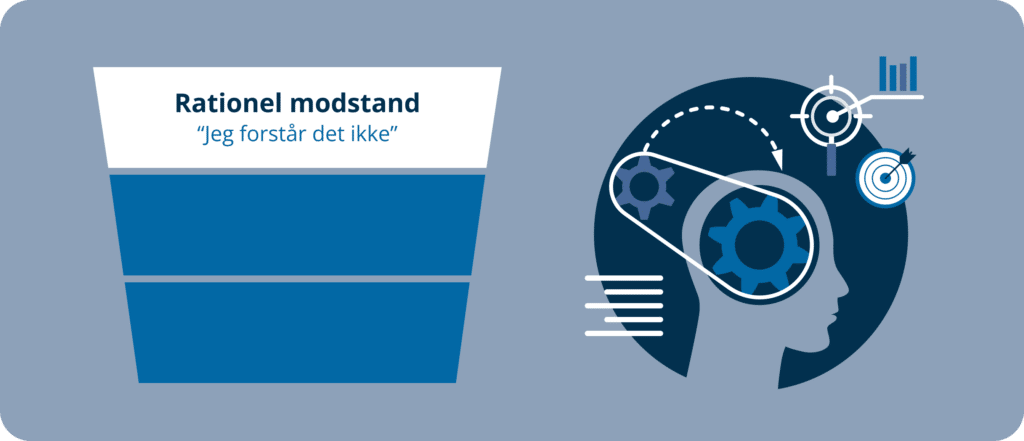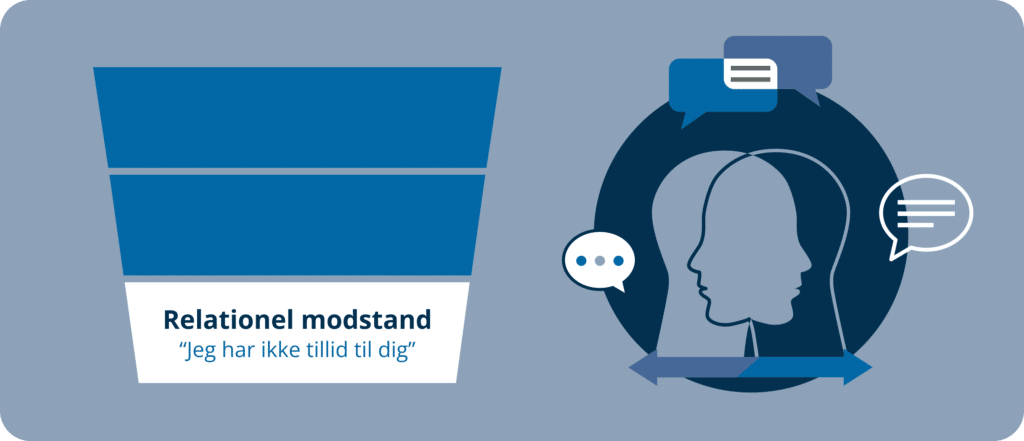Few leaders can probably deal with change without thinking about resistance. Resistance to change. It's only natural. Because even if the strategy for the change is in place, the communication plan is in place, and all the preparatory work is well thought out and rationally meaningful, the change still represents something new. A break from the usual, the normal, the familiar and the visible. In this article, we'll take a brief look at how to work with resistance to change from an organizational perspective.
Resistance is actually a natural reaction to the unknown. The unknown can mean risk, danger and fear. "What will the change mean for me?", "What impact will it have on my tasks? For my position?" and "Who will be affected by the change - directly and indirectly? For example, will I still have the same colleagues on the other side?".
Questions like these will almost inevitably arise for employees who are faced with demands for change. Especially if the understanding of the change is lacking.
While a negative reaction to change is natural, it's necessary to take resistance seriously if the change is to be successful. Otherwise, resistance can spread to other employees, putting work on hold and derailing the change process.
Reasons for resistance to change
Resistance to change can have many different reasons. A fear or nervousness about the new and unfamiliar things that are about to happen. A risk of losing status or influence. An uncertainty about one's role in the future. General change fatigue, process fatigue or a damaged or lack of trust in management. These are just some of the possible causes.
In general, resistance to change can be divided into three types that place resistance on three levels: rational, emotional and relational resistance.
The levels reflect the type of resistance and who it is directed at. The higher the level of resistance, the more difficult it is to manage.
1. rational resistance
The first level is the rational, where resistance is about whether employees understand the change. For example, employees will oppose if they feel that the communication is unclear, inadequate or sender-oriented - i.e. without taking into account their situation and WII FM ("what's in it for me?"). Clear, successful, segmented and recipient-oriented communication, on the other hand, can result in employees understanding the change. But does that mean they support it? Not necessarily.

2. Emotional resistance

You can understand a change rationally - why it makes sense and is timely - without agreeing or liking the change. The saying "If you don't like the change, you don't like the change" makes it clear what the second level - emotional resistance - represents. This can be expressed by employees reacting emotionally and physically, among other things. High heart rate, difficulty concentrating and other symptoms of stress can be caused by a fear of what the change will bring.
3. relational resistance
The third level is relational resistance, which is the most difficult to resolve. Here, the resistance is not rooted in the change itself, but in the leader or what the leader represents or personifies - i.e. the top leaders or the culture of the organization. Employees may find it difficult to trust the leader as a person and may question the leader's credibility, values, personality and ability to lead them safely through the change process.

Want to be even better equipped to manage processes?
LEAD's research-based process consultant training gives you the methods to design, facilitate and lead strategic development processes and changes to create the impact you need.
This is an education for those who work with development, processes and change management.
Read more about the process consultant training here
Consequences of resistance to change
The consequences of resistance can be many. Probably the most obvious is how difficult it is to get the thoughtful and urgent change project to materialize into actual behavior and improvements from a before state to an after state. When change fails to materialize, it can lead to frustrations for management, who feel that their good intentions are being thwarted. And for employees, who can become change fatigue as they experience a series of unrelated projects that never get completed before new ones are started.
Mutual frustrations can erode trust between employees and managers - and the collaboration between the two groups. During the change process, resistance can also manifest as delays, inertia and conflict, which can cause damage beyond the individual change project.
How do you create change and deal with resistance?
It's tempting to think - or hope - that employees and managers work in a concentrated, goal-oriented and rational way on their tasks within the organization's framework. Fortunately, most do. But all employees and managers are also driven by emotions. Especially in change processes, emotions come to the fore - and you have to deal with them in order to manage resistance to change. And this applies whether the resistance is on an emotional or relational level.
An excellent starting point is to seriously consider the question from before: "what's in it for me?", which will probably be the first thing on most people's minds. "What does this change mean for me and what do I get out of it?". That's why it's necessary to meet each employee where they are and talk about what change will mean to them - and why they might be resisting it.
Spread out across the three levels of resistance, the advice is:
- Counter rational resistance by being open, clear and concise about why the change is driven by urgency. There is a very pronounced communicative risk in going straight to explaining what employees need to do - and how they need to do it - without first making it clear why they need to do it in the first place.
- Overcome emotional resistance by listening to employee concerns and being honest and upfront about the opportunities and challenges that change brings.
- Counter relational resistance by being honest, admitting mistakes and empowering employees.
You can read more about creating a good change process in our article How to create change and development with impact.

Do you want to get better at:
- Clarify the organization's real issues
- Create a design that matches the unique problem
- Read a room and facilitate effectively
- Communicate the right messages that create engagement and followership
- Be more confident in your role as a process manager
- Integrate top-down and bottom-up processes
- Design and implement engaging and varied ways of working
- Increase speed by using behavioral design
- Develop and implement in an agile way - adapting as the situation changes.
Fill out the form below and receive our description of the research-based process consultant training that gives you the most powerful tools for process management in practice.



